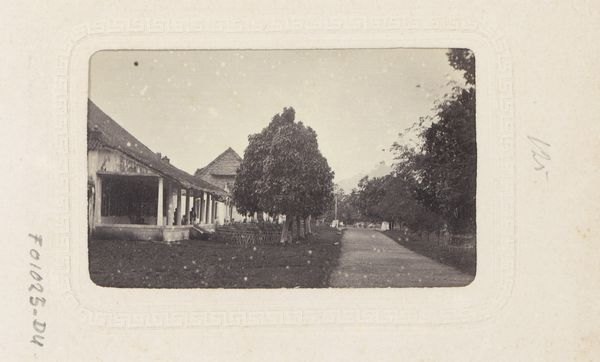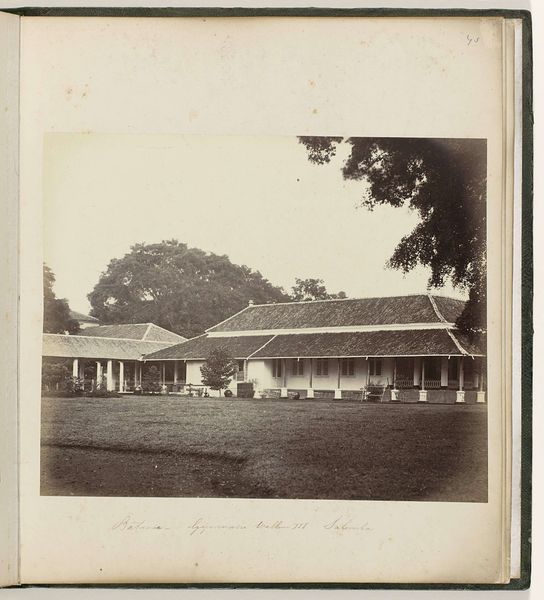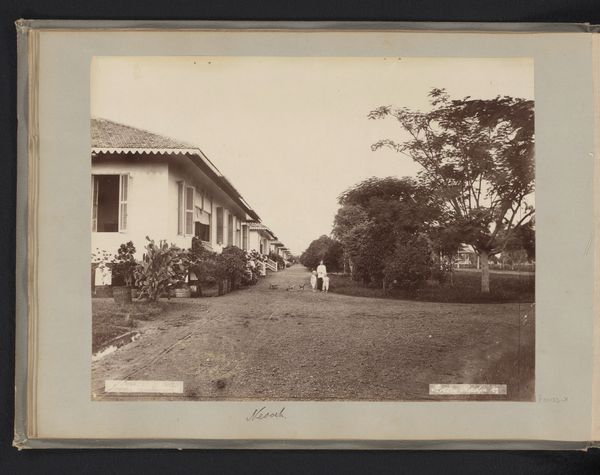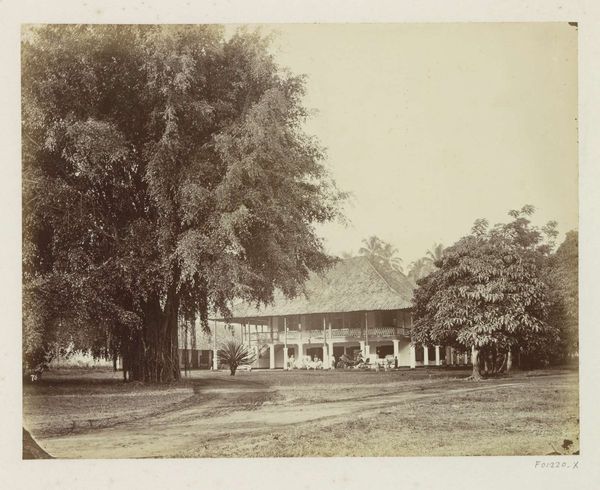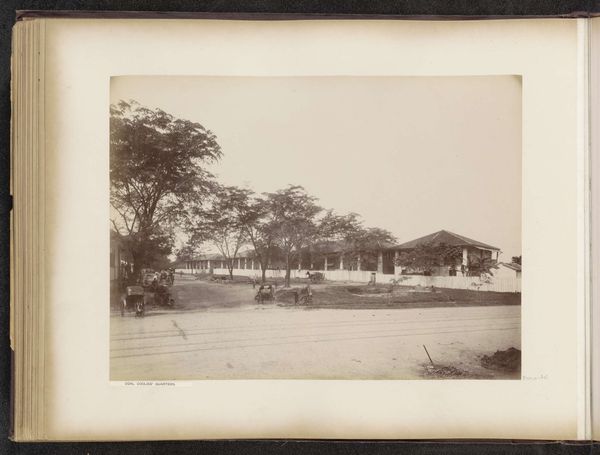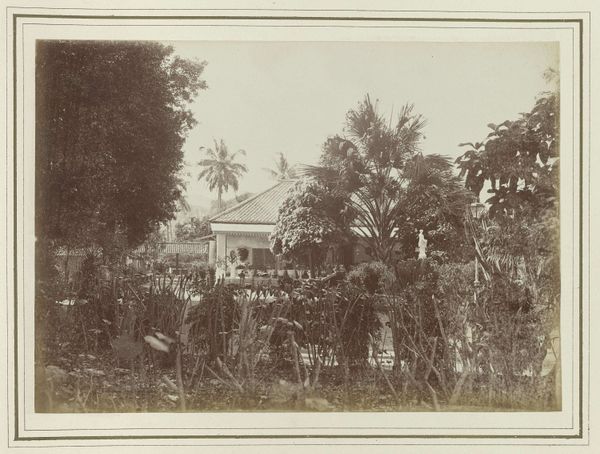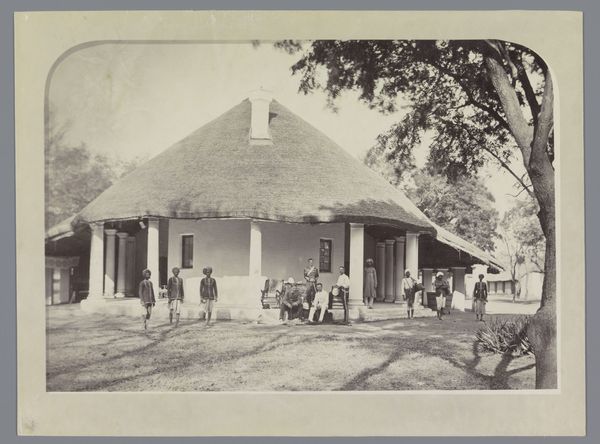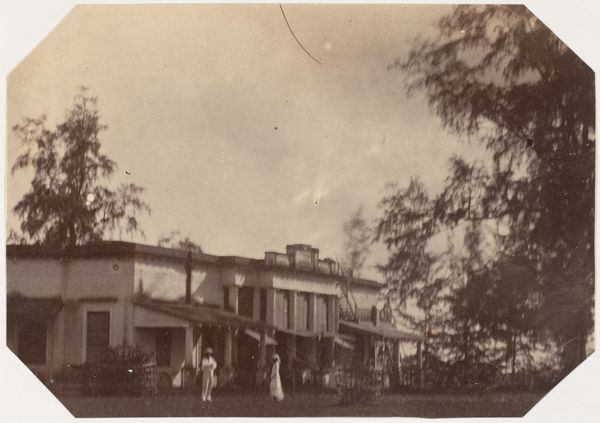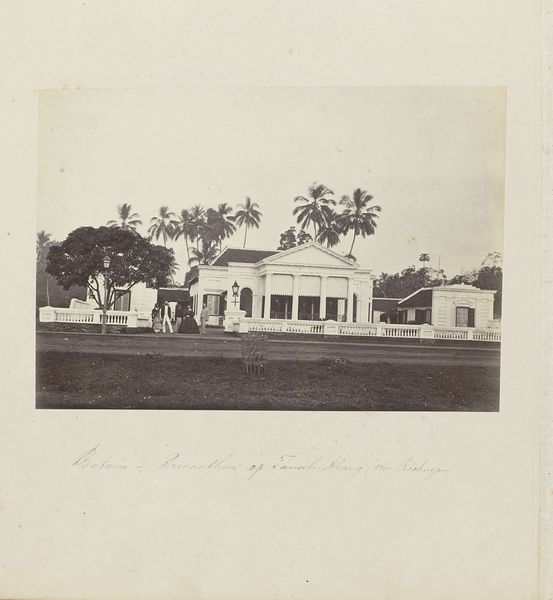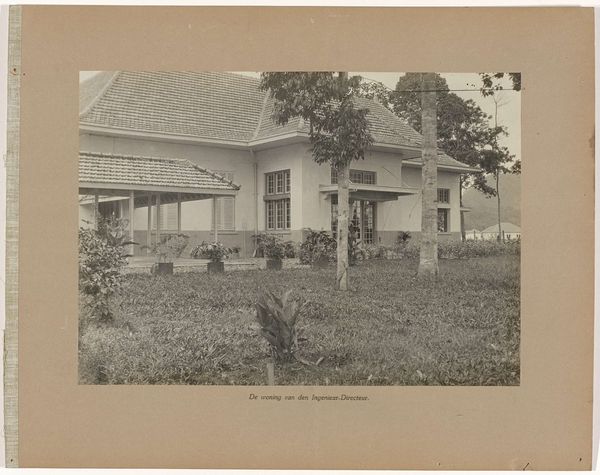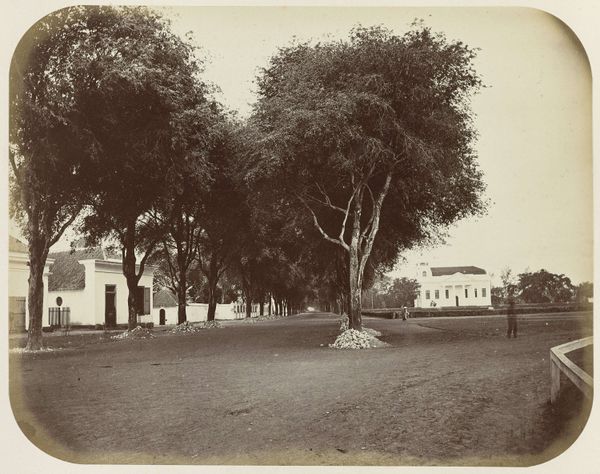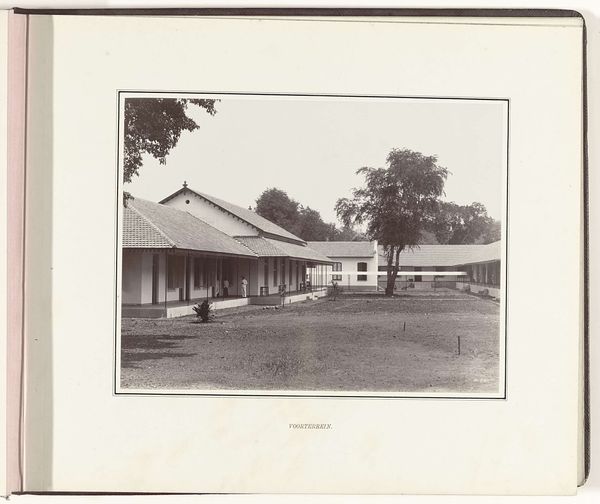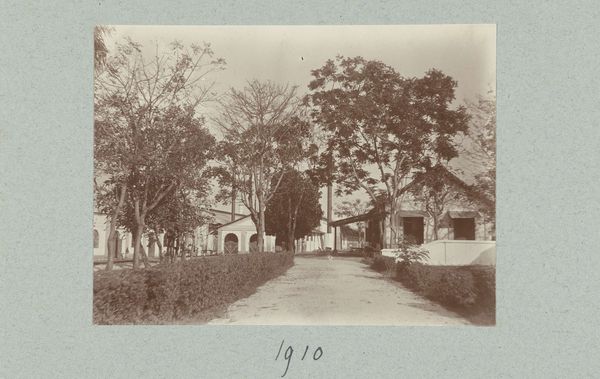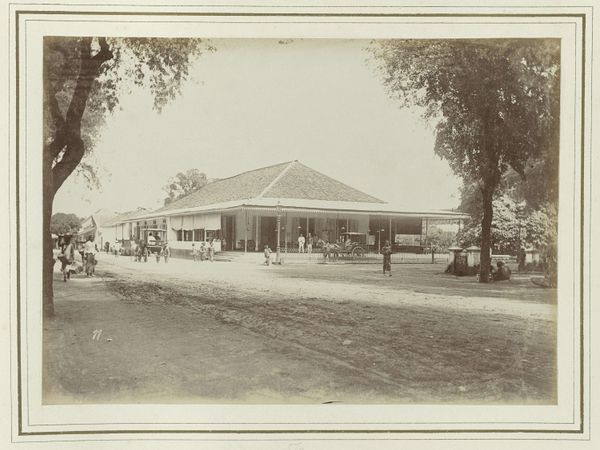
photography, gelatin-silver-print
#
aged paper
#
toned paper
#
landscape
#
photography
#
orientalism
#
gelatin-silver-print
#
cityscape
#
realism
Dimensions: height 85 mm, height 52 mm
Copyright: Rijks Museum: Open Domain
Curator: This gelatin-silver print, dating roughly from 1857 to 1880, presents a “Street View in Ambon,” crafted by Woodbury & Page. Its monochrome tones certainly evoke a sense of history and a distant locale. Editor: Immediately, I’m struck by the textures: the corrugated roofs contrasting with the smooth columns, all anchored in what looks like deeply worked earth. There's something incredibly tactile about this image. Curator: That’s astute. Consider the symbolism inherent in colonial architecture; the columns, an overt reference to European classicism, planted in this quite different locale, embodying power and order imposed upon the "Orient." Editor: And yet, look closer—those thatched roofs seem almost aggressively "local" in their construction. A deliberate visual dialogue perhaps? An assertion of pre-colonial material practices? What was the supply chain and building conditions? Were there trade routes bringing goods? Curator: Precisely! It is likely that Woodbury & Page were appealing to a specific audience with these depictions, reinforcing notions of exoticism but also, a "civilized" imposition of the colonizers. Notice how light falls and illuminates only select parts. It accentuates differences within a single frame. Editor: This use of photography and staging, like orientalist painting and visual tropes—is telling, right? We could dig into who made the gelatin, what labor went into printing—tracing its journey as a material object could unravel the socio-political landscape itself. I can’t help thinking of the environmental costs that went into building these foreign structures for trade. Curator: That material record opens possibilities. Perhaps then, the quiet human figure observing from the veranda represents not mere placidity, but resilience, witnessing ongoing negotiations with these shifting powers? The cultural memories it must embody, given the imported architectural symbols? Editor: Yes, this photo freezes an ambiguous moment ripe with implications! Thanks to thinking through its materiality and construction— the structures both depicted and embedded within the print itself— the power dynamics really snap into sharp relief for me. Curator: Indeed, by carefully considering how those visual cues interact, and how it continues as a dialogue piece to this very moment, we can re-awaken that historical conversation.
Comments
No comments
Be the first to comment and join the conversation on the ultimate creative platform.
